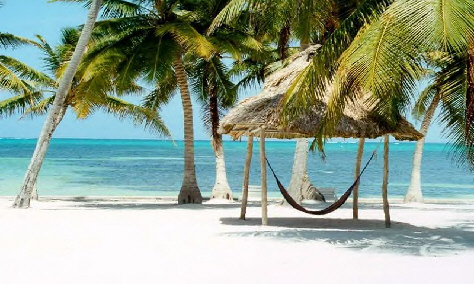|
||||||
|
Regions and Towns
Belize City
This ramshackle, colorful Caribbean city was Belize's former capital and is the country's only settlement of any size. The tropical storms which periodically razed the town in the 19th and early 20th centuries still arrive to do damage to its aging wooden buildings, but they also flush out the open drainage canals, redolent with pollution, which crisscross the city. When there's no storm, Belize City bustles, steams and swelters. Few people come to Belize City for a holiday or to see the sights but it's the transport and commercial hub of the country, so travelers are likely to spend some time here. Some travelers report that the city can be quite dangerous, particularly after dark. |
|
|
The city's commercial center is divided from the more genteel northern neighborhoods by Haulover Creek, a branch of the Belize River. The creek is spanned by the Swing Bridge. Interesting spots south of the bridge include Battlefield Park, which is always busy with vendors, loungers and con men; St John's Cathedral (1847), the oldest and most important Anglican church in Central America; and the Bliss Institute, the city's cultural center. North of the bridge is the wood-framed Paslow Building, housing the city's main post office. Heading south from there is the Image Factory Art Foundation, showcasing work by Belizean artists, and before the tip of the peninsula is the Belize Audubon Society, a good source of info on national parks and wildlife reserves throughout the country. North Front St, on the north bank of Haulover Creek, has a good selection of budget accommodations. The luxury hotels are located at the end of the north shore peninsula. The main commercial streets are Albert, Regent, King and Orange Sts.
The Cayes
Belize's 290km (180mi) long barrier reef is the longest reef in the western hemisphere. To the west of the reef are numerous cayes basking in warm water usually not much more than 5m (16ft) deep. The two most popular with travelers are Caye Caulker and Ambergris Caye. Caulker is commonly thought of as the low-budget island; Ambergris is more resort-oriented.
Caye Caulker
(pop 800), 33km (20mi) north of Belize City, is 7km (4mi) long and only about 600m (650yds) wide at its widest point. Actually, Caulker is two islands now since Hurricane Hattie split it just north of the village in 1961. Mangroves cover much of the shore and coconut palms provide shade. The reef is just a short boat ride from the eastern shore and offers some of the world's most exciting diving, snorkeling and fishing. Underwater visibility can be an astonishing 60m (197ft) and the coral and tropical fish are wonderful. Don't swim out to the reef from the beach unless you want to gamble on a 50-50 chance of being decapitated by boat propellers. Ambergris Caye (pop 2,000), 58km (36mi) north of Belize City, is the largest of the country's cayes. It's 40km (25mi) long and almost connected to the Mexican mainland on its northern side. Like Caulker, it has an engaging laid-back atmosphere, though holiday condominiums are beginning to appear. The reef is 1km (.5mi) east of the main town of San Pedro. There are a host of excursions offered to diving and snorkeling spots and to other cayes in the region, including to Blue Hole,Half Moon Caye and Turneffe Islands, the only three coral atolls in the western hemisphere.
Lamanai
This impressive, semi-restored, semi-excavated Mayan site is located in its own archaeological reserve near the settlement of Indian Church. Its 60 significant structures include a grand 34m (112ft) high late Preclassic building, a small temple and a ball court. Lamanai (submerged crocodile) was occupied as early as 1500 BC and became a major ceremonial center with immense temples long before most Mayan sites. The Maya lived here right up until the arrival of the Spanish; two ruined Indian churches nearby testify to the fact that there were still Maya here to be converted. The 90-minute boat trip up the New River from Orange Walk to reach the site is an adventure in itself. The boat passes the Mennonite community of Shipyard and offers the opportunity to see plenty of birdlife and crocodiles.
Xunantunich
Xunantunich (Stone Maiden) is the archaeological pride of Belize, although you might find it anticlimatic if you've seen Tikal or Copán. Set on a levelled hilltop near the Belize River close to the Guatemalan border, Xunantunich controlled the riverside track which led from the hinterlands down to the Caribbean coast. The site flourished as a ceremonial center and is thought to have been abandoned after an earthquake damaged it around AD 900. The site has not been extensively restored, though its tallest building - El Castillo - rises an impressive 40m (131ft) out of the jungle. |
|

